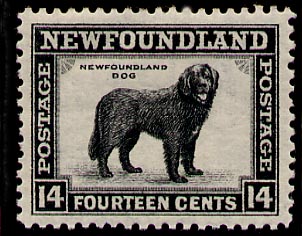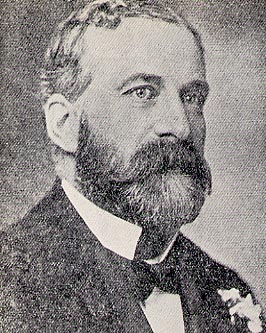
History

 |
Newfoundland History |
 |
Newfoundland History
American (United States) Fishing Rights in Newfoundland
[This text was publihed in 1950. For the full citation, see the end of the document. Links and the image have been added by Claude Bélanger.]
After the War o f American Independence the new United States demanded, as part of the peace settlement, continuation of the fishing rights they had enjoyed in North Atlantic waters as British colonies. Great Britain at the end of the War was not in a position to resist American demands and the Treaty of Versailles in 1783 accorded United States inhabitants equal rights with British subjects to fish in the waters of British North America, including Newfoundland .
After the War of 1812 the Convention of 1818 revived certain of these rights but withheld others. Although inshore fishing rights on the Nova Scotian coast were withheld from the United States under the Convention, these rights were continued along the Newfoundland south coast from Ramea Islands to Cape Ray, along the whole of the west coast northward to Quirpon Island and in Labrador from Mont Joli northward. The United States also secured the right for its fishermen to land and dry fish in any unsettled part of the southern coast from Cape Ray to Ramea Islands and in Labrador. In addition, they were allowed the privilege of entering bays and harbours in other parts of the Island for shelter, repairs or to obtain wood and water.
To conduct the fishery efficiently, however, the United States needed access to harbours for securing crews, transhipping supplies and obtaining bait. These facilities were important factors in negotiations with the United States .
Under the Reciprocity Treaty of 1854, in return for these port privileges and inshore fishing rights on the entire Newfoundland coast (as well as those of the maritime colonies), free entry was obtained by the United Kingdom for fish and fish products to United States markets. This Treaty, however, was abrogated by the United States and came to an end in 1866. Reciprocal inshore fishing rights and free access to the United States for fish oils were revived by the Treaty of Washington in 1871 but were later abrogated by the United States in 1885.
After the closing of the free market in the United States , friction developed. Newfoundland, dismayed at the loss of the United States market, passed a Bait Act in 1886 which prevented United States fishermen from buying bait in Newfoundland . The United States in return threatened an embargo on Newfoundland fish products. In 1890 Newfoundland resolved to enter into separate negotiations with the United States, and a draft convention was worked out between Sir Robert Bond (later Prime Minister of Newfoundland) and James A. Blaine, the United States Secretary of State. When the Canadian Government learned of the proposed arrangement it protested on the ground that the Atlantic fisheries had always been treated as a unit, and the British Government accordingly refused to approve the proposed "convention", which had not yet been approved by Congress. Canada 's opposition to the so-called "Bond-Blaine Convention" of 1890 was deeply resented in Newfoundland. Under pressure of the British Government, Newfoundland continued to permit privileges to United States fishing vessels on the basis of a modus vivendi, but did so reluctantly. The fishing rights of the United States in Newfoundland waters were not finally clarified until The Hague Tribunal in 1910 defined United States rights of fishery in Canadian and Newfoundland waters under the Convention of 1818 and ruled that the territorial power had rights of reasonable regulation.

Sir Robert Bond
Colonial Secretary and Prime MinisterSource: GOVERNMENT OF CANADA, Newfoundland. An Introduction to Canada's New Province, Published by authority of the Right Honourable C. D. HOWE, Minister of Trade and Commerce, prepared by the Department of External Affairs, in collaboration with the Dominion Bureau of Statistics, Ottawa, 1950, 142p., pp. 15-41.
© 2004 Claude Bélanger, Marianopolis College |